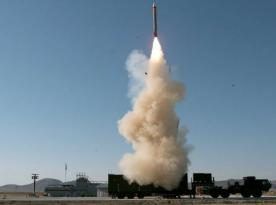The Swedish Armed Forces are set to acquire long-range strike capabilities against ground targets, something the country currently lacks. At present, Sweden's only long-range assets consist of 26 Archer 155mm self-propelled howitzers and the RBS-15 anti-ship missiles.
The decision has already been made: Sweden will procure cruise missiles and modern multiple launch rocket systems. This was confirmed by Chief of Defence Staff General Michael Claesson.
Read more: Assistance Package for Ukraine: Mysterious Details about Long-Range Missiles from Sweden
"First and foremost, this is about deterrence. It’s not enough to defend your own territory, you also need to force the enemy to defend theirs. You must be able to strike their logistics, staging areas, and more," he said in an interview with Sweden Herald.
He did not name the exact systems under consideration, but noted that the shortlist includes two to three options. That narrows it down only slightly, given the limited number of viable systems on the market. Likely candidates include the American HIMARS (and its German-modified GMARS), the Israeli PULS, and South Korea’s K239 Chunmoo.

Back in June 2024, South Korea’s Hanwha Aerospace openly expressed its intent to sell its rocket artillery system to Sweden, even specifying a proposed quantity of 16 to 18 launchers. At the same time, more exotic and less immediately feasible options remain on the table, such as the French Foudre system or India’s 214 mm Pinaka Mk2.
It’s also worth noting that Scandinavian countries tend to pursue a degree of standardization in defense procurement. However, neither Norway nor Finland has finalized a decision on a rocket artillery system. Oslo appeared to favor the HIMARS platform, and although the U.S. approved the sale of 16 launchers and associated munitions for $580 million, a binding contract has yet to be signed.
The issue of cruise missiles is more complicated, mainly because it’s unclear whether Sweden intends to procure sea-, air-, or land-launched variants. Notably, Sweden already possesses a cruise missile capable of striking ground targets: the latest version of Saab’s RBS-15 Mk IV Gungnir, which has a range of up to 300 km and can engage land-based targets. This versatile missile is already integrated with Swedish corvettes and missile boats, land-based launchers, and Gripen fighter jets.

However, there’s an important caveat. According to current modernization plans, the JAS 39C/D Gripen will only be upgraded to carry the Taurus KEPD 350 cruise missile under the MS20 Block 4 standard. Although Sweden participated in the Taurus missile’s development and explored integration with the Gripen, no operational Gripen aircraft have been equipped with it to date.
This upgrade is expected to be completed by 2028 for the C/D models, and by 2032 for the new Gripen E/F variants. That timeline raises questions, especially since the Taurus missile is no longer in production. While the next-generation Taurus Neo is in development, it is not expected to be available until 2029. Alternative options, such as acquiring Norway’s Joint Strike Missile (JSM) or the U.S.-made JASSM, remain possible.
Read more: Sweden Bought IRIS-T SLMs Underequipped With Radars — Plain Economy or Europe's New Air Defense Unit Configuration












